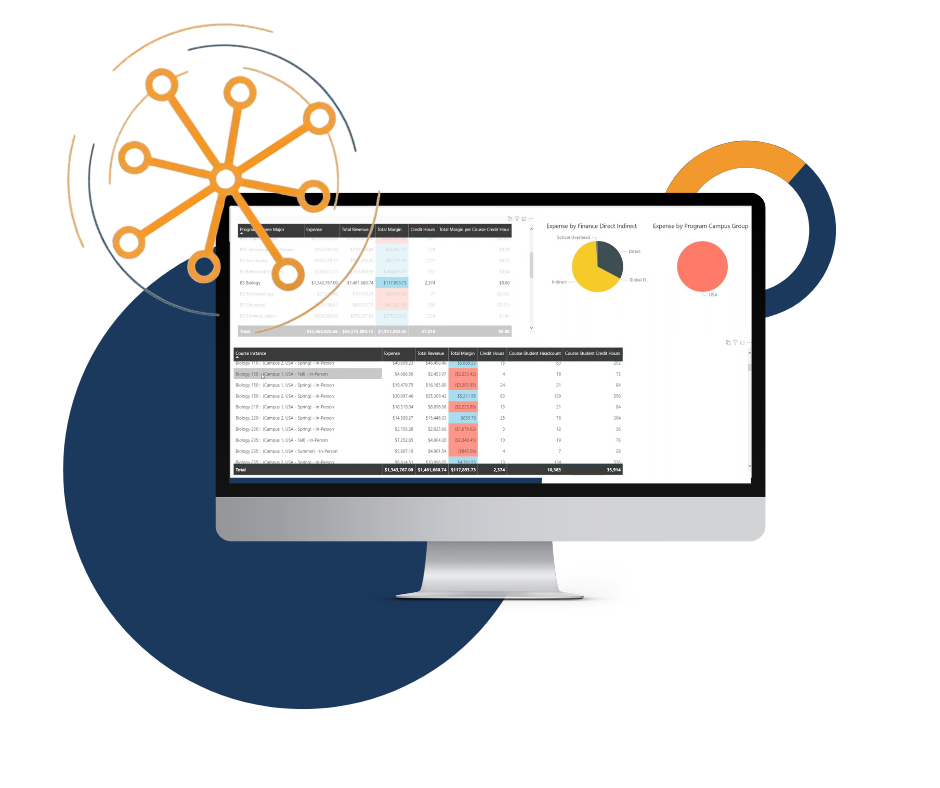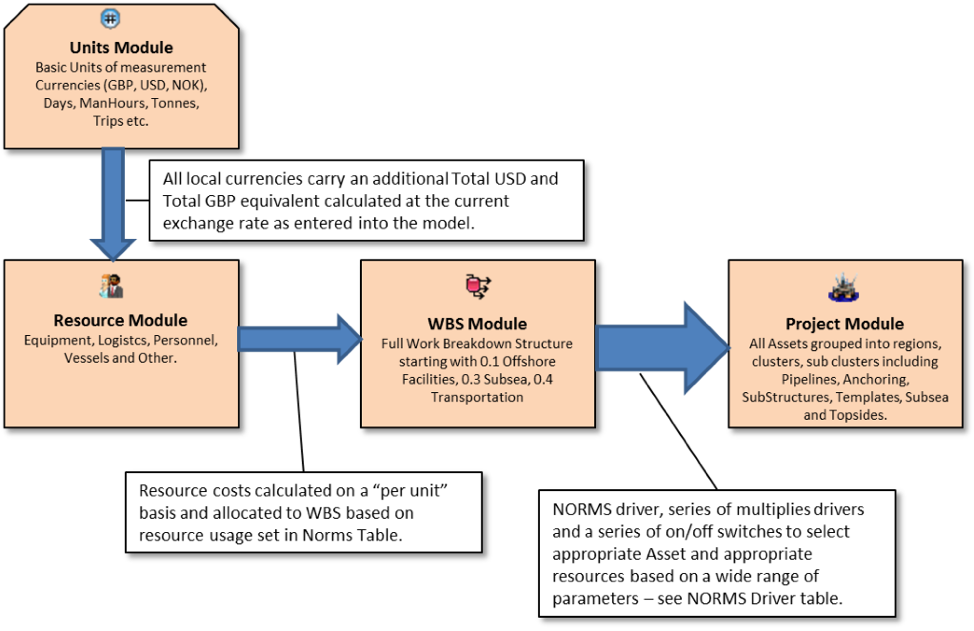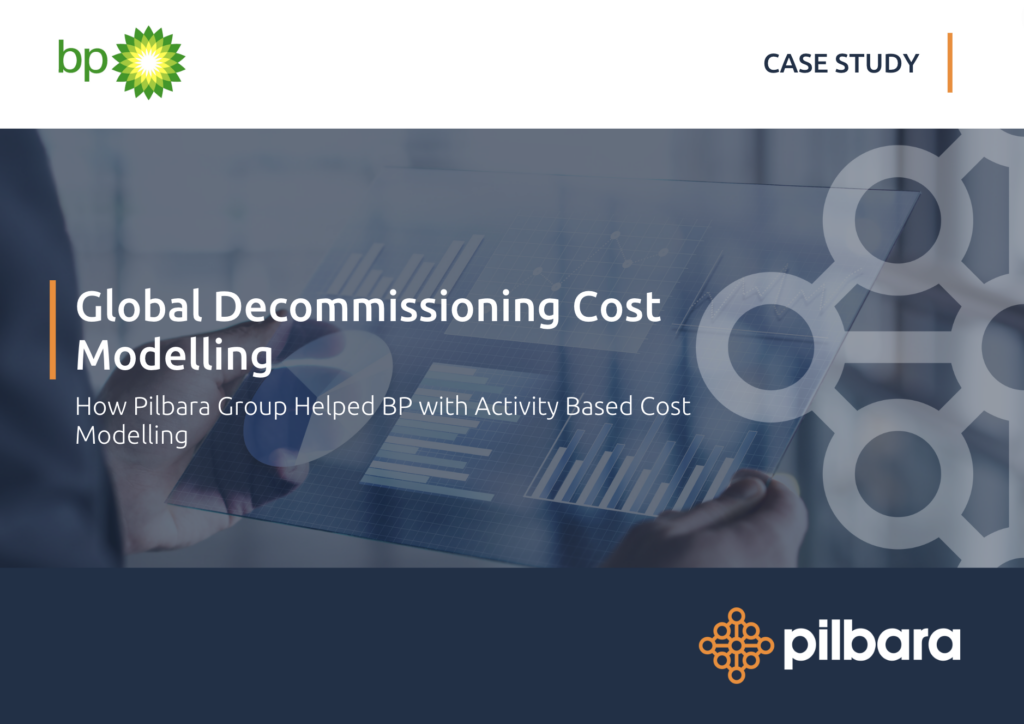Oil & Gas Decommissioning
Developing a Strategic Approach to Decommissioning
Smarter Decommissioning

“The Pilbara model allows BP to operate at the forefront of our industry in centralising and standardising complex regional cost estimates”
~ Win Thornton, VP Decommissioning, BP
Over the last eight years, Pilbara has worked with BP in the area of decommissioning cost estimation. In 2011, Pilbara designed and built a model which allows BP Upstream to estimate the costs of remediating and removing our global assets at the end of their useful life.
The Pilbara model allows BP to operate at the forefront of our industry in centralising and standardising complex regional cost estimates. The Pilbara team at executive and operational level has been consistently accessible and attentive to our needs as a customer and model-user. The team is technically able, developing solutions to problems and proposing simplifications to the system as it matures. In 2018, Pilbara successfully managed a significant update to the model and, this year, they are working closely with us to meet BP’s updated cyber security requirements.
 Proud partner of the Centre of Decommissioning Australia
Proud partner of the Centre of Decommissioning Australia
What is decommissioning?
Decommissioning involves the safe plugging of the hole in the earth’s surface and disposal of the equipment used in offshore oil production. Decommissioning is a rapidly developing market sector in the petroleum business, with major potential and major risks. It is a source of major liability for countries, operators, contractors and the public and it must be understood if it is to be managed cost effectively.
Why is it important to get it right?
- Decommissioning costs are generally legally binding and represent a future legal obligation – they are not optional
- The provision is reflected on the balance sheet and as such subject to external audit
- Represents management’s best estimate of future decommissioning liabilities
Why does the decommission provision matter?
- They are material and significant to the industry and growing
- Realistic estimates enable early planning and efficient extinguishment of liabilities through divestment or decommissioning project execution
Why a global decommissioning provision cost model?
- Decommissioning is a significant future cost
- Need to account for it (accounting provision)
- Need to plan for it (long term business plan, cash flow forecasting)
- Need to do this without developing ‘project quality’ estimates for every asset
- Business drivers for a common global provision model
- Consistent definition of decommissioning scope and activity
- Benchmarking, challenge & learning across the asset portfolio
- ‘What if’ capability
- Strategic planning, innovation & engagement with supply chain
- Efficiency & reduced dependency on individual, region-specific models
- Assurance of compliance policy & standards
Decommissioning Cost Estimating Model (DCEM) Underlying Model Structure
Pilbara Insights is the underlying modelling platform for DCEM.
DCEM is a cloud-based centralized estimating model using standard rates, norms, Work Breakdown Structure etc. and standard business rules for calculating and distributing cost through the model. The model can cover all assets globally. This is a significant improvement on the typical method of calculating these costs with multiple, distributed spreadsheets.
The DCEM model is primarily comprised of four key modules, Units, Resource, WBS and Project as described in the diagram below.
Decommissioning involves the safe plugging of the hole in the earth’s surface and disposal of the equipment used in offshore oil production. Decommissioning is a rapidly developing market sector in the petroleum business, with major potential and major risks. It is a source of major liability for countries, operators, contractors and the public and it must be understood if it is to be managed cost effectively.
Request a Demo
Discover the power of Pilbara Insights and take control of your organization’s financial future. Request a demo or contact our expert team to learn how our Activity-Based Cost Modeling engine can optimize your costs, drive sustainable growth, and boost profitability. Don’t let inefficiencies hold you back—start optimizing your costs today!





